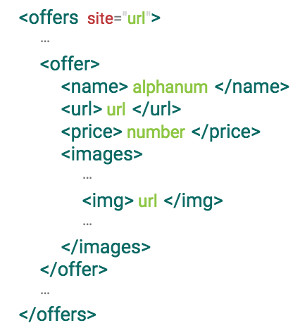Datasource
location of your import data
Datasource is a record that holds information about a specific source of data.
Data formats
Import data can be stored in various formats. At the moment, datakick supports only XML files. In the future there will be support for CSV files, JSON format, google spreadsheets, and even APIs of external service providers.
File location
Datakick can import data from different locations.

The easiest way is to upload your own file. DataKick will save uploaded file to a special staging directory on your server and keep it indefinitely. This mode is usually used only for one-off data imports.
Another way is to tell DataKick that the file already exists on your server. You will need to upload the file manually using FTP, and then tell us the absolute path to this file. This approach has huge benefit - datakick will always use the current content of the file during the import. That makes it ideal for scheduled data updates.
The last, and the most powerful way, is to use file hosted on remote server. Datakick will automatically download fresh copy of this file every time you start the import. This is a great tool to synchronize data provided by your suppliers into your store.
File analysis
When you add new datasource to the system, datakick will try to analyze it. This process is very important. Not only it ensures that the input file is valid, it also help us understand structure of the data. And that, in turn, let us more intelligently guide you through import process.

The analysis can reveal many interesting informations, for example
- what nodes and attributes this file contains?
- what type of content is stored in each node or attribute? Is it number, currency, text or url?
- does node have multiple children with the same name?
- can node be empty?
These informations are very helpful later. For example, when importing available quantity field, we will suggest to use only nodes containing numerical values.
Compatible import definitions
The datasource analysis is also used to find compatible import definitions.
Every import definition has some requirements. For example, it may need numerical field with path /offers/offer/price. If all requirements are met by the datasource, then the import definition is compatible with this datasource.
This mechanism let us re-use import definitions. It can be very useful especially when working with uploaded files. It also allows for downloading prepared import definitions from our store. For example import definition for data in Google Merchant Center format.